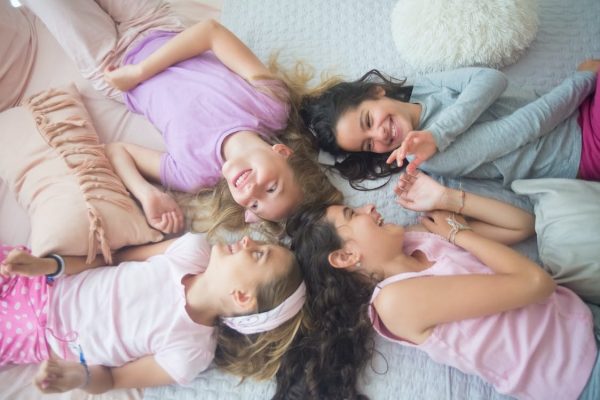Bedwetting and sleepovers

When considering whether to allow a bedwetting child to sleep away from home, parents need to take several factors into account. These include the child’s age, frequency of accidents during sleep, the duration of the sleepover, the sleep venue, and whether the parents will be present. All of these factors are important to consider.
Based on these considerations, parents have a few options:
1. Prohibit the child from sleeping over: This can put parents in a challenging situation. On one hand, they don’t want to hinder their child’s social life, but on the other hand, they want to avoid potential uncomfortable situations if bedwetting occurs. Parents should assess the likelihood of a wet night based on the factors mentioned earlier and past experiences.
2. Wake the child and take them to the bathroom: This approach can be used if a parent or another responsible adult is present. It may reduce the chances of bedwetting, but it cannot guarantee accident-free nights, especially if bedwetting occurs frequently. Providing a plastic sheet cover and extra linen can be helpful when the child sleeps away. However, this solution may not be suitable for adolescents, and in such cases, parents should be informed about the issue and asked for their consent.
3. Use medication: While medications like DDAVP (Minirin) can reduce urine production during sleep and lessen the chance of bedwetting, they do not guarantee complete dryness. Some children respond positively to Minirin, but it should be used under medical supervision, and the child’s response and appropriate dosage should be assessed beforehand. Consulting a doctor before using Minirin is essential, as there can be side effects and the risk of water intoxication if fluid consumption before bedtime is not restricted.
4. Use pull-ups: Under normal circumstances, the use of pull-ups is discouraged, especially with older children, as it may hinder the motivation to overcome bedwetting and perpetuate the problem. However, during sleepovers, pull-ups can be a viable solution, allowing the child to keep their bedwetting discreet and providing peace of mind. While pull-ups do not prevent bedwetting, they can conceal it if it occurs.
For some children, particularly teenagers, bedwetting frequency can be low and unpredictable, causing fear of sleepovers. However, the chances of bedwetting during a sleepover are usually slim due to shallower sleep and increased alertness during sleepaway nights.
>> Visit our FAQ section for more information about bedwetting treatment
>> To learn more about our plans and pricing click here
Search
Recent Posts
Categories
- ADHD
- adult bedwetting
- All about Bedwetting
- bed wetting
- bed wetting alarms
- bed wetting treatment
- bedwetting
- bedwetting blog
- bedwetting causes
- Bedwetting Dictionary
- bedwetting medication
- bedwetting solution
- bedwetting solutions
- bedwetting therapee
- bedwetting therapy
- diurnal enuresis
- dribbling
- How to stop bed wetting
- nappies
- News
- primary enuresis
- progress chart
- secondary enuresis
- sleep
- sleepovers
- The Solution – Therapee
Tags
Archives
- March 2025
- November 2024
- October 2024
- September 2024
- August 2024
- May 2024
- April 2024
- March 2024
- February 2024
- January 2024
- December 2023
- September 2023
- August 2023
- July 2023
- June 2023
- May 2023
- April 2023
- March 2023
- February 2023
- January 2023
- December 2022
- November 2022
- October 2022
- September 2022
- August 2022
- July 2022
- June 2022
- May 2022
- April 2022
- March 2022
- February 2022
- January 2022
- December 2021
- November 2021
- October 2021
- September 2021
- August 2021
- July 2021
- February 2015
- January 2015
- December 2014
- November 2014
- October 2014
- September 2014
- August 2014
- July 2014
- June 2014
- May 2014
- April 2014
- March 2014







